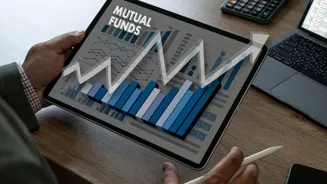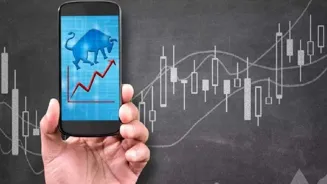What is the story about?
Kotak Business Cycle Fund, launched in September 2022, has recorded a compound annual growth rate (CAGR) of 18.39% since inception, according to fund house data. The scheme delivered an absolute return of over 8% in the past six
months, outperforming its benchmark, the Nifty 500 TRI.
As of July 31, 2025, it posted an alpha of 6.1% over the benchmark in the past year, the highest in its category, the fund house said.
Business cycle funds invest based on the phases of the economic cycle — expansion, peak, slowdown, and recovery — rotating across sectors and market capitalisations to capture opportunities and manage risks. For example, cyclical sectors like automobiles and banking may benefit during expansions, while defensive sectors like pharmaceuticals tend to perform
better in slowdowns.
Unlike single-sector strategies, Kotak Business Cycle Fund adjusts its portfolio dynamically, with flexibility to invest across large-, mid-, and small-cap stocks.
As of June 2025, portfolio changes included raising healthcare exposure from 5% in June 2023 to 14% in March 2025, contributing an estimated 2–3% to returns, and reducing IT allocation from 8% to 3% amid weak global demand, reallocating part of the portfolio to small-cap stocks.
The fund’s assets under management have
grown in line with wider interest in the business cycle category, which saw the top three schemes deliver over 20% returns in calendar year 2024.
Market analysts note that while the strategy offers flexibility and potential for outperformance, it can also lead to periods of underperformance if economic shifts are misjudged. Business cycle funds are generally considered suitable for investors with a long-term horizon of at least five years and the ability to withstand portfolio volatility.
As of July 31, 2025, it posted an alpha of 6.1% over the benchmark in the past year, the highest in its category, the fund house said.
Business cycle funds invest based on the phases of the economic cycle — expansion, peak, slowdown, and recovery — rotating across sectors and market capitalisations to capture opportunities and manage risks. For example, cyclical sectors like automobiles and banking may benefit during expansions, while defensive sectors like pharmaceuticals tend to perform
Unlike single-sector strategies, Kotak Business Cycle Fund adjusts its portfolio dynamically, with flexibility to invest across large-, mid-, and small-cap stocks.
As of June 2025, portfolio changes included raising healthcare exposure from 5% in June 2023 to 14% in March 2025, contributing an estimated 2–3% to returns, and reducing IT allocation from 8% to 3% amid weak global demand, reallocating part of the portfolio to small-cap stocks.
The fund’s assets under management have
Market analysts note that while the strategy offers flexibility and potential for outperformance, it can also lead to periods of underperformance if economic shifts are misjudged. Business cycle funds are generally considered suitable for investors with a long-term horizon of at least five years and the ability to withstand portfolio volatility.
Do you find this article useful?















